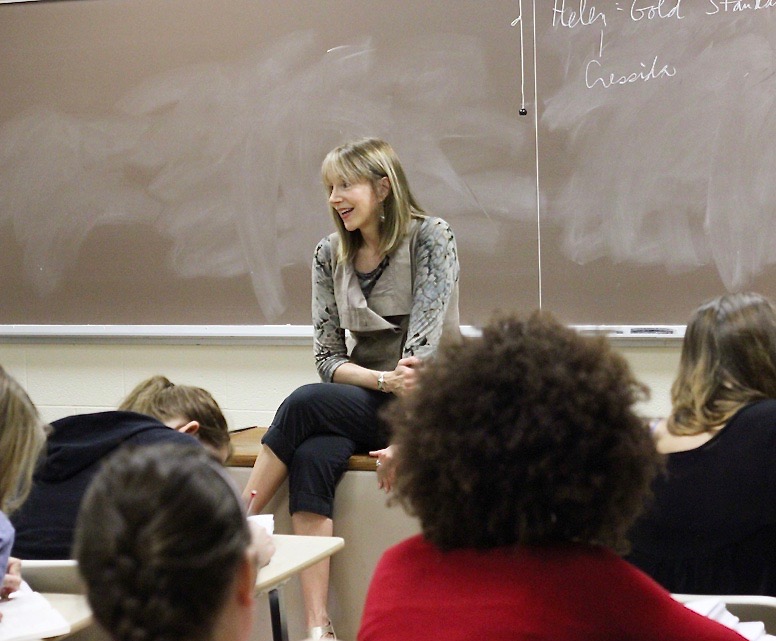As a late middle-ager, it was gutting to me to have to choose to teach entirely web-based classes this coming Fall. But my feelings are not the point. We’ve been reading statistics that suggest that 75% of students think that online courses are inferior to in-person classes. What that says to me is that most people, given the choice, want to be on campus, in classrooms, with their instructors, fellow students, friends—that the college experience is centrally about forming an extra-familial culture in which the nurturing of young people becomes largely a project of teaching them about the much larger world, and giving them a chance to learn what kinds of communities they, as individuals, want to join.
However, for most students polled, the comparison is between online versus their in-person experience prior to Covid-19, when people could get to class early, get to know their classmates, make new friends, catch up on things, and then become a group when their instructor arrived. They experienced the release of oxytocin (the bonding chemical) that up-close eye contact, debating a point with fellow classmates, and instructors’ real-time engagement with them created. The electric energy of a well-run class, with bright young people sharing views in person, cannot be replicated by other means. There is nothing like it at a somatic level. Deep learning is an embodied experience; it involves knowledges of the kind that teaches students that they can disagree with someone sitting two feet away from them; that they can argue with a professor up close, and feel how the energy changes (hopefully positively) in the room.
What students learn in live classrooms is the course material, certainly. But what they really learn is how to be in a group of diverse people who come from different backgrounds, family systems, socioeconomic strata; they learn how to parse each other’s faces and voices; they learn what it means to disagree while still finding another student "simpatico" because of having chatted with them before, or after class, or in the halls, or in a cafeteria. They learn that their fellow students aren’t really all that different from them, and that there are multiple ways to forge connections and fellowship. A good teacher will know how to facilitate and grow these "extracurricular" factors while teaching what’s on a syllabus.
Students who oppose online classes in favor of face-to-face (F2F) haven’t yet experienced what it will be like in their college classrooms. Everyone will have to disinfect their own desk, and remain at least six feet away from every other desk. Everyone will have to wear a mask, including the instructor. No one will be able to casually talk in the halls or in the classrooms anymore, for reasons of viral risk-reduction. During class, students won’t be able to see each other’s faces. They won’t be able to see their instructors’ faces. Students whose voices are quiet—and there are many—will find they have to repeat anything they say. Those toward the rear of a Covid-spaced classroom will have to shout their remarks. Instructors will have to lecture without being able to parse their students’ micro-expressions (something on which all skilled teachers rely), or be able to "just tell" that a shy student has something to add to the conversation.
After class ends, every student will be asked to disinfect their “station” and to file out maintaining six feet of distance between them. There’ll be no gathering of students around the instructor after class for additional questions, or even to just hang out with each other for a few extra minutes. The experience of being F2F in a “live” classroom will more closely resemble a factory assembly-line than a place where people connect, engage each other, and share that most precious thing a college classroom affords: a safe space to grow and air one’s own voice and views, in the close company of peers and a mentor. As an instructor, I can only foresee alienation in such a setting, and not the vivid environment of communal learning that our classrooms were before last March.
Students might wish to consider how an online course, especially one done synchronously with everyone present on Zoom, enables a greater possibility for communal intimacy than a Covid-prepared classroom might. Prior to Covid-19, instructors who wanted to teach online courses and students who wanted to take them had options; for the rest of us, being on-campus, with our fellow instructors, our staff, our students, and seeing the thousands of people who bring energy and dynamism to our campuses, is our lifeblood. As an instructor, walking down a hallway toward my classroom and hearing the talking, laughter, and noise emanating from the room was a giant boost of energy for me. The anticipation of walking into that space and saying hello to everyone is a gift without measure, even though I had to tell them to put away their phones and take their earbuds out. Energy breeds energy; good energy powers learning.
I’m distraught over many things about the pandemic, foremost of which is the horrific loss and maiming of lives. As I order a large whiteboard for at-home teaching, I feel little of the excitement or anticipation I’ve always felt at the start of a new school year. My job will be to find a way to recreate by other means that energy, intimacy and dynamism, and to get my students to contribute to our joint success. As hard as it is to admit, I’d rather be able to see their faces up close on a computer screen, and have them see mine, than see them spaced out across a huge room, wearing masks and indistinguishable from each other. And I hope I live and teach long enough to be able to return to rooms where I can be with them in person.

 The College of Arts
The College of Arts